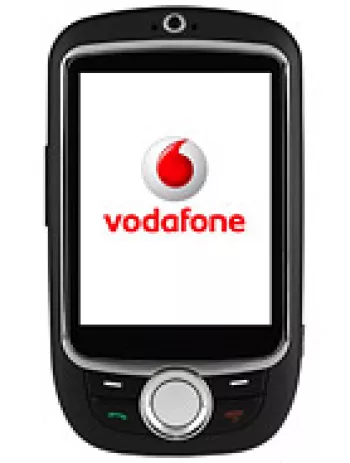
Overview of Vodafone 547
The Vodafone 547 is a feature phone that was launched in April 2010. It represents an era when non-smartphones were still prevalent among users who needed basic functionality paired with simple design concepts. Despite being discontinued, the device holds a place in mobile history as a representation of early 2010s technology trends. This article delves deep into the specifications, advantages, and legacy of the Vodafone 547.
Design and Build
The Vodafone 547 features a compact and attractive design, suitable for users who prefer carrying lightweight devices. The phone supported a Mini-SIM and had dimensions that made it easy to handle, although the exact measurements are unspecified. Available in black, white, and red colors, the phone catered to a wide range of personal preferences regarding aesthetics.
Display
Equipped with a TFT resistive touchscreen, the phone could display up to 256K colors on a 2.8-inch screen. With a resolution of 240 x 400 pixels at a ~167 ppi density, although basic by today's standards, the screen was sharp enough for regular phone functions and served its purpose for viewing simple content and menus. The resistive nature of the touchscreen meant it was responsive to pressure from either a fingertip or stylus.
Performance
The Vodafone 547 was a feature phone, which implies its primary focus was on efficiency and basic functionality rather than performance or high-end computing power. Its internals allowed for running fundamental applications, and it supported Java MIDP 2.0 which enabled various Java-based applications and games to be run on the device.
Network and Connectivity
The phone supported GSM technology and could operate on GSM 850 / 900 / 1800 / 1900 bands. GPRS class 10 and EDGE class 10 connectivity options were available for basic internet usage. While it did not include advanced connectivity features like Wi-Fi or GPS, it supported Bluetooth 2.0 which was useful for file transfers and connecting to other Bluetooth devices. Proprietary USB support allowed for connection to a computer for data transfer purposes.
Camera
The Vodafone 547 was equipped with a single 2 MP main camera capable of capturing photos and videos. At the time of its release, a 2 MP camera was common in feature phones, providing adequate quality for users who did not require high-definition images but wanted the convenience of a camera in their pocket.
Battery and Power
The phone was powered by a removable Li-Ion battery. While the exact battery life is not specified, feature phones traditionally offered extended battery life compared to modern smartphones due to their lower power requirements. This made the Vodafone 547 a practical choice for users needing reliable and long-lasting cellular devices.
Memory and Storage
The device supported a dedicated microSD slot for external storage expansion, allowing users to store additional data such as photos, music, and contacts. It also had functionality for maintaining a phonebook with photo call and call record capabilities which were essential features during its era.
Software and Applications
Running a feature phone operating system, the Vodafone 547 provided access to basic mobile applications. It supported SMS, MMS, and email for messaging, and came with a WAP 2.0/xHTML browser for internet access through services such as Opera Mini. The phone included basic games and the Java MIDP 2.0 support meant additional applications could be installed to some extent.
Sound and Multimedia
The Vodafone 547 had a built-in loudspeaker, supporting audio playback, and featured an FM radio with RDS, catering to users who enjoyed listening to live radio broadcasts. However, the absence of a 3.5mm headphone jack meant users needed specific adaptors or Bluetooth solutions to connect personal audio devices.
Legacy and Conclusion
While no longer available on the market, the Vodafone 547 serves as a classic example of an early 2010s feature phone designed for functional and reliable everyday usage without the complexities of modern smartphones. Its straightforward design, sufficient camera, and basic connectivity capabilities fulfilled the needs of its time. As a piece of mobile history, the Vodafone 547 reflects the transition from feature phones to the widespread adoption of smartphones, marking a significant shift in the mobile industry's landscape.
Key Features of Vodafone 547
- GSM technology supporting multiple 2G bands (GSM 850 / 900 / 1800 / 1900)
- GPRS and EDGE support with Class 10 speed
- 2.8 inch TFT resistive touchscreen display with 256K colors
- Expandable storage via microSD card slot
- 2 MP main camera with video capability
- Stereo FM radio with RDS support
- Bluetooth 2.0 for wireless connectivity
- Low SAR value of 0.65 W/kg for head
- Affordable pricing around 40 EUR
Disadvantages of Vodafone 547
- Discontinued model, no longer supported or updated.
- Lacks 3G, 4G, or 5G network support; limited to GSM networks only.
- Resistive touchscreen, which may not be as responsive as capacitive touchscreens.
- No front-facing (selfie) camera available.
- No WiFi capability, limiting internet connectivity options.
- No GPS support for location-based services.
- Proprietary USB interface can be inconvenient for charging and data transfer.
- No 3.5mm headphone jack, limiting audio accessory compatibility.
- Limited internal sensors, potentially affecting usability for certain applications.

View Also
More Phones
All Rights Reserved +13916 Phones © Mobilawy 2025

























